Muhammad Aamir
Biomedical Image Segmentation: A Systematic Literature Review of Deep Learning Based Object Detection Methods
Aug 06, 2024



Abstract:Biomedical image segmentation plays a vital role in diagnosis of diseases across various organs. Deep learning-based object detection methods are commonly used for such segmentation. There exists an extensive research in this topic. However, there is no standard review on this topic. Existing surveys often lack a standardized approach or focus on broader segmentation techniques. In this paper, we conducted a systematic literature review (SLR), collected and analysed 148 articles that explore deep learning object detection methods for biomedical image segmentation. We critically analyzed these methods, identified the key challenges, and discussed the future directions. From the selected articles we extracted the results including the deep learning models, targeted imaging modalities, targeted diseases, and the metrics for the analysis of the methods. The results have been presented in tabular and/or charted forms. The results are presented in three major categories including two stage detection models, one stage detection models and point-based detection models. Each article is individually analyzed along with its pros and cons. Finally, we discuss open challenges, potential benefits, and future research directions. This SLR aims to provide the research community with a quick yet deeper understanding of these segmentation models, ultimately facilitating the development of more powerful solutions for biomedical image analysis.
Digital Twinning Remote Laboratories for Online Practical Learning
Dec 13, 2021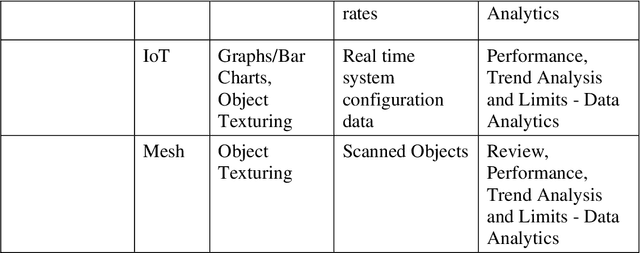
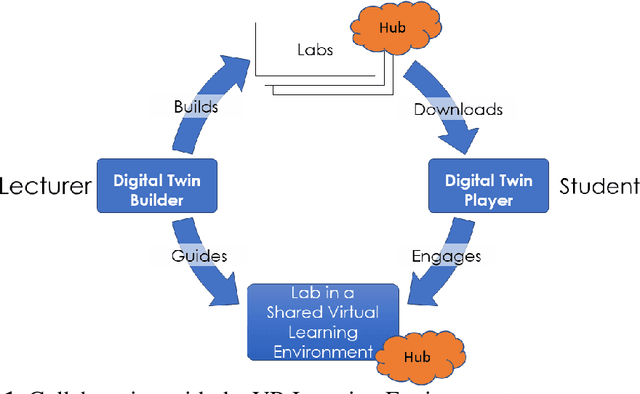

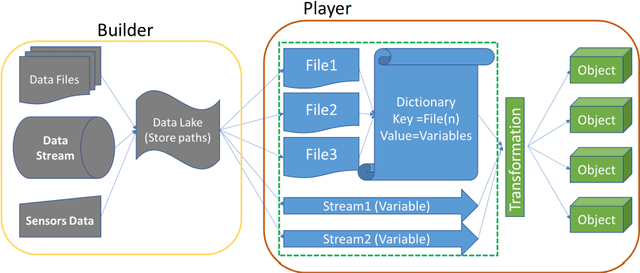
Abstract:The COVID19 pandemic has demonstrated a need for remote learning and virtual learning applications such as virtual reality (VR) and tablet-based solutions. Creating complex learning scenarios by developers is highly time-consuming and can take over a year. It is also costly to employ teams of system analysts, developers and 3D artists. There is a requirement to provide a simple method to enable lecturers to create their own content for their laboratory tutorials. Research has been undertaken into developing generic models to enable the semi-automatic creation of a virtual learning tools for subjects that require practical interactions with the lab resources. In addition to the system for creating digital twins, a case study describing the creation of a virtual learning application for an electrical laboratory tutorial has been presented.
Virtual Reality based Digital Twin System for remote laboratories and online practical learning
Jun 17, 2021

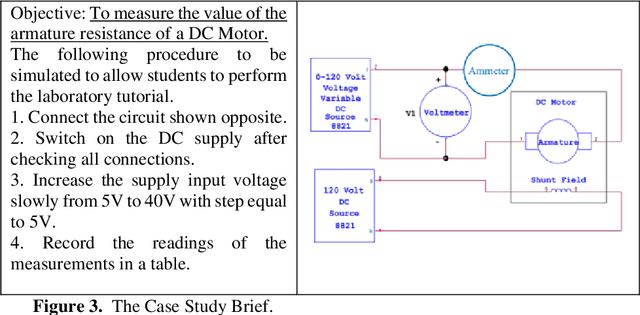
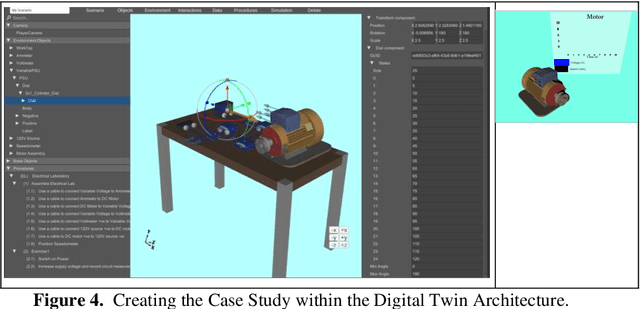
Abstract:There is a need for remote learning and virtual learning applications such as virtual reality (VR) and tablet-based solutions which the current pandemic has demonstrated. Creating complex learning scenarios by developers is highly time-consuming and can take over a year. There is a need to provide a simple method to enable lecturers to create their own content for their laboratory tutorials. Research is currently being undertaken into developing generic models to enable the semi-automatic creation of a virtual learning application. A case study describing the creation of a virtual learning application for an electrical laboratory tutorial is presented.
Comparative Analysis of Machine Learning Approaches to Analyze and Predict the Covid-19 Outbreak
Feb 11, 2021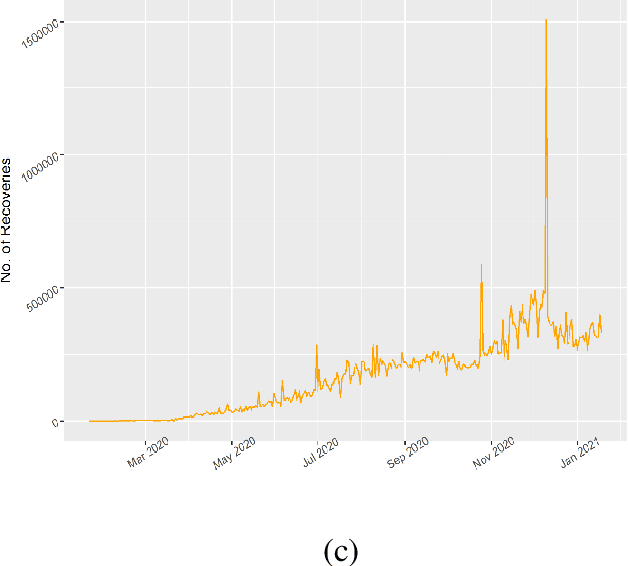
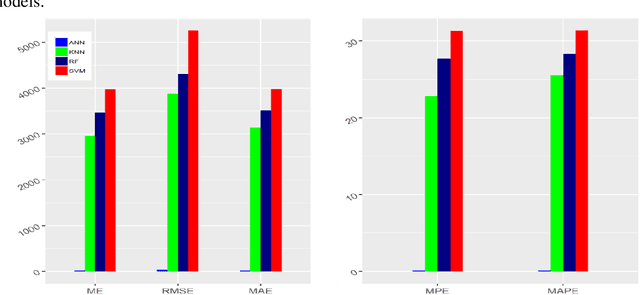
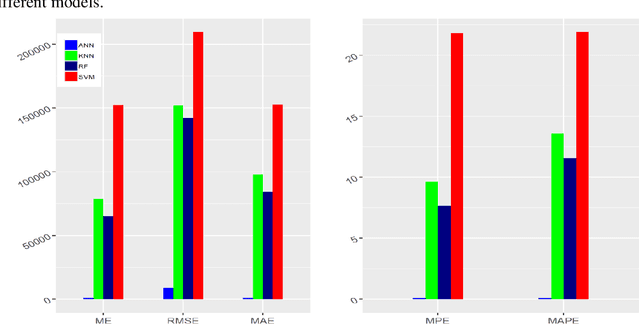
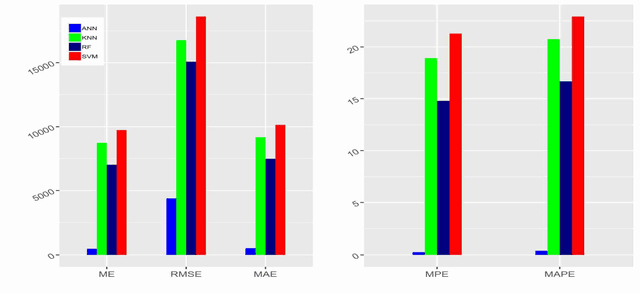
Abstract:Background. Forecasting the time of forthcoming pandemic reduces the impact of diseases by taking precautionary steps such as public health messaging and raising the consciousness of doctors. With the continuous and rapid increase in the cumulative incidence of COVID-19, statistical and outbreak prediction models including various machine learning (ML) models are being used by the research community to track and predict the trend of the epidemic, and also in developing appropriate strategies to combat and manage its spread. Methods. In this paper, we present a comparative analysis of various ML approaches including Support Vector Machine, Random Forest, K-Nearest Neighbor and Artificial Neural Network in predicting the COVID-19 outbreak in the epidemiological domain. We first apply the autoregressive distributed lag (ARDL) method to identify and model the short and long-run relationships of the time-series COVID-19 datasets. That is, we determine the lags between a response variable and its respective explanatory time series variables as independent variables. Then, the resulting significant variables concerning their lags are used in the regression model selected by the ARDL for predicting and forecasting the trend of the epidemic. Results. Statistical measures i.e., Root Mean Square Error (RMSE), Mean Absolute Error (MAE) and Mean Absolute Percentage Error (MAPE) are used for model accuracy. The values of MAPE for the best selected models for confirmed, recovered and deaths cases are 0.407, 0.094 and 0.124 respectively, which falls under the category of highly accurate forecasts. In addition, we computed fifteen days ahead forecast for the daily deaths, recover, and confirm patients and the cases fluctuated across time in all aspects. Besides, the results reveal the advantages of ML algorithms for supporting decision making of evolving short term policies.
 Add to Chrome
Add to Chrome Add to Firefox
Add to Firefox Add to Edge
Add to Edge